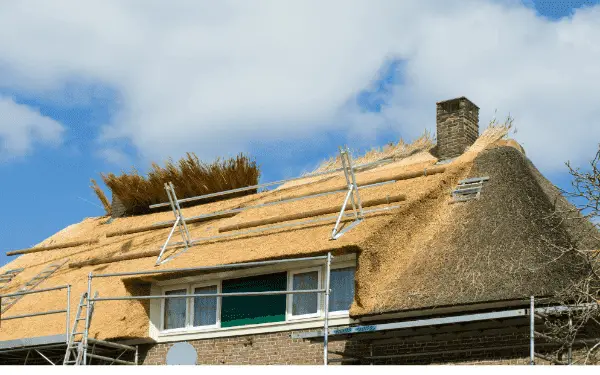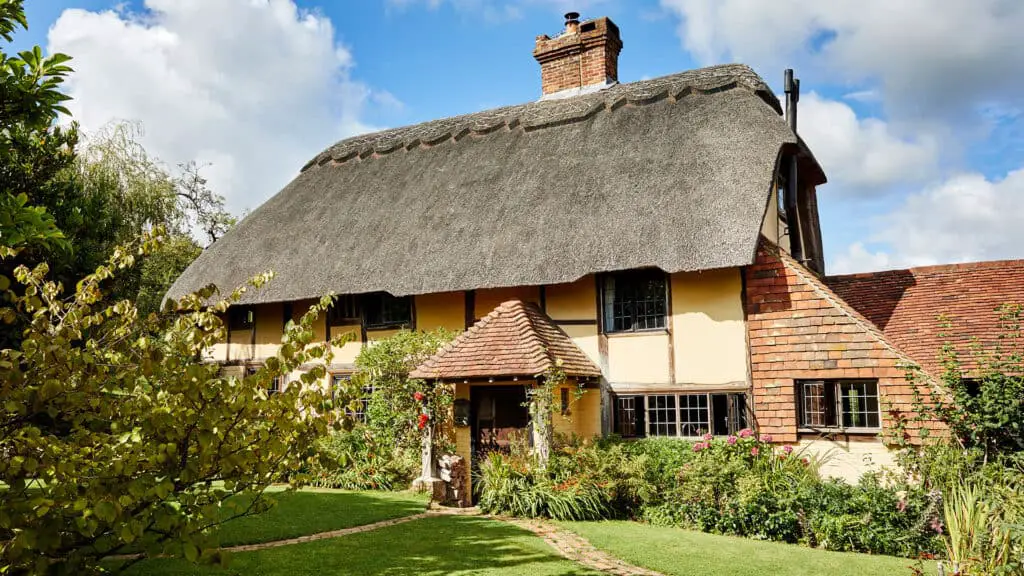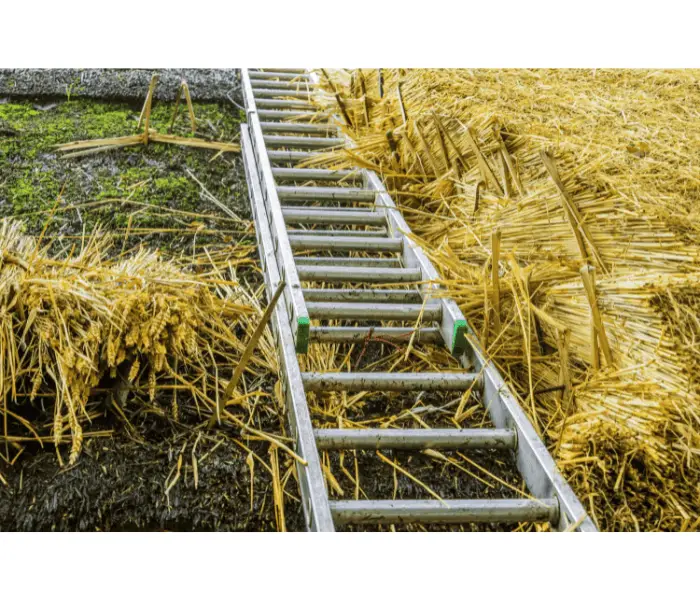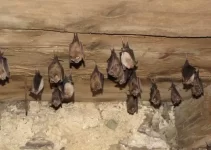Although thatched roofs need more upkeep than other roof types, they don’t need fully replacing all that often. Knowing when to do it, and the signs to look for, are usually the job of a qualified thatcher.
However, if you live in a house with a thatched roof, it’s worth being able to spot some of the signs yourself.
The first step is to know how often a thatched roof needs rethatching, which is what we’ll cover below. You’ll find plenty of other relevant information, so read on to find out everything you need to know about rethatching a thatched roof.

How Often Does a Roof Need Rethatching?
A thatched roof needs rethatching anytime between 15 and 40 years after installation, although some have been known to last 60 years or more. There’s such a difference in times because it depends on factors such as maintenance, local weather, and overall humidity.
In the intervening period between complete rethatches, you’ll need to have maintenance work done. This includes tidying up loose reeds or straw and replacing the ridge.
The ridge is the part at the very top of the roof that degrades the quickest.
People living in homes with thatched roofs should keep track of when their roof was last rethatched. Of course, if you haven’t long moved into your home, it’ll be a case of the previous owners telling you.
It’ll be worth knowing the signs that your roof needs replacing in case you (or the previous owner) have lost track of when it was last done.

Signs Your Roof Needs Rethatching
If you’re in any doubt about whether your thatched roof needs work, you should contact a qualified thatcher.
Not dealing with repair and maintenance issues can lead to your roof leaking and causing damage to your home.
However, it helps to know some early signs that your roof needs replacing. These include:
· The roof is dipping in places
· The thatch is shedding material more than before
· Wire netting and other structural elements are visible
· There’s a lot of moss or lichen on the roof
· The roof’s flashings are damaged
· You’ve noticed a leak inside the building
Generally, these are signs that you’re due a rethatch, although some can be solved with minor repairs.
Make sure you get confirmation from a qualified thatcher regarding the next steps, as you don’t want to patch over a problem that might lead to more issues in the future.
What is the Upkeep on a Thatched Roof?
As with any long-term purchase, a well-maintained thatched roof will last longer than one that’s ignored. You’ll only need to do maintenance work once a year at most, which will typically be in the spring as the weather starts getting nicer.
A cursory inspection just before winter can be a good idea too.
During your inspection, you’ll want to look for:
· Dips or depressions in the thatch
· Signs of damage
· Evidence of pests (birds, rats, etc.)
· Slippage of thatch – often characterised by dips or thatch sticking out
· Plants growing on the thatch
· Persistent wet areas
If you notice any of these, it’ll be worth getting a thatcher to come take a closer look. While some are easy to fix or might not need any work at all, they can be signs of bigger underlying issues.
At the very least, a thatcher will be able to clean your roof while inspecting it. This is something you can do, too, as it’s not a difficult job.
Cleaning a thatched roof means removing moss build-up and leaves and other debris. Support structures, such as netting and ridge wiring, need tightening every year too.
How Long Does It Take to Re Thatch a Roof?
It can take anywhere from 2 to 8 weeks to rethatch a roof. Unsurprisingly, this depends on the roof’s size, shape and material, and the number of thatchers working on the roof at the same time.
The process starts with a thatcher assessing your roof. You won’t know about timelines or price until this has been done, as it’s usually not possible for a thatcher to advise these until they’ve had a look at the job.
Provided you’re happy with their quote, rethatching starts with them removing the existing roof. The thatchers will then rebuild it, starting at the bottom and working up.
Bundles of straw or reeds are placed on the roof and then pinned in place. Once the whole roof is built, the material will be trimmed and butted to get an even finish.
Bear in mind that the actual thatching process may differ depending on where you live. In the UK, for example, there are numerous thatching processes that are unique to different regions.
This might include materials, installation processes, timelines, and decorations. Even so, the steps above are a rough example of what the process will look like.
Re-ridging your thatched roof is a much quicker job. Depending on the roof size, it should only take a maximum of 2 weeks.
Doing this regularly will help preserve the rest of the thatch, meaning you won’t need to have it replaced as often.
Rethatching Cost
The cost of rethatching a thatched roof can vary massively. As you can probably guess by now, it depends on the size of the roof, the complexity of the job, and the materials used.
Price can also vary by your location and the experience level of the thatcher doing the work.
For example, rethatching could cost anything from £1,500 to £2,000 per thatchers square. This is an area covering roughly 9 metres squared – the average cost for a whole roof based on this price is about £50,000.
On the other hand, thatching costs on average £700 per thatchers square, which brings the price down massively.
Based on this price, it calculates that an 83 sq. m. roof would cost around £6,500. This is drastically cheaper than the price given above by Checkatrade.

The bottom line is that it can be an expensive job. Luckily, considering it only needs to happen every 15 years at a minimum, you’ve got plenty of time to save up!
Bear in mind that you might be limited in your options when it comes to having your roof rethatched. It probably won’t come as a surprise that there aren’t many thatchers working in the UK, at least compared to standard roofers.
As such, you might not have loads of thatchers to choose from when it comes to having your roof done.
You should still aim to get a few quotes for the work if you can because the price can vary so much, it’ll help to have a frame of reference.
Is a Thatched Roof Expensive to Maintain?
The cost to maintain a thatched roof will depend on how much work needs to be done and how much your thatcher charges for a callout fee.
Expect to pay a few hundred pounds depending on the extent of the job, although this may only cover the actual inspection!
If the roof just needs cleaning, you could do this yourself if you know what you’re doing.
Of course, you’ll still need a professional to inspect the roof, and working on a thatched roof carries more risk than other materials. As such, it might just be easier to get a professional to do it.
Rethatching Thatched Roofs Final Thoughts
Hopefully, this article has covered everything you could need to know about rethatching a thatched roof. The bottom line is that it’s pretty expensive and can take a while to do.
That said, it doesn’t need doing that often, so just make sure you budget appropriately so you’ve got the money at the right time.
Unfortunately, there’s no avoiding the maintenance fees of a thatched roof.
This is something you must consider before moving into a thatched property, as looking after the roof is just as much a necessary expense as your energy bills or council tax!
Provided you’re able to pay the maintenance fees, though, living in a thatched property comes with plenty of benefits.

